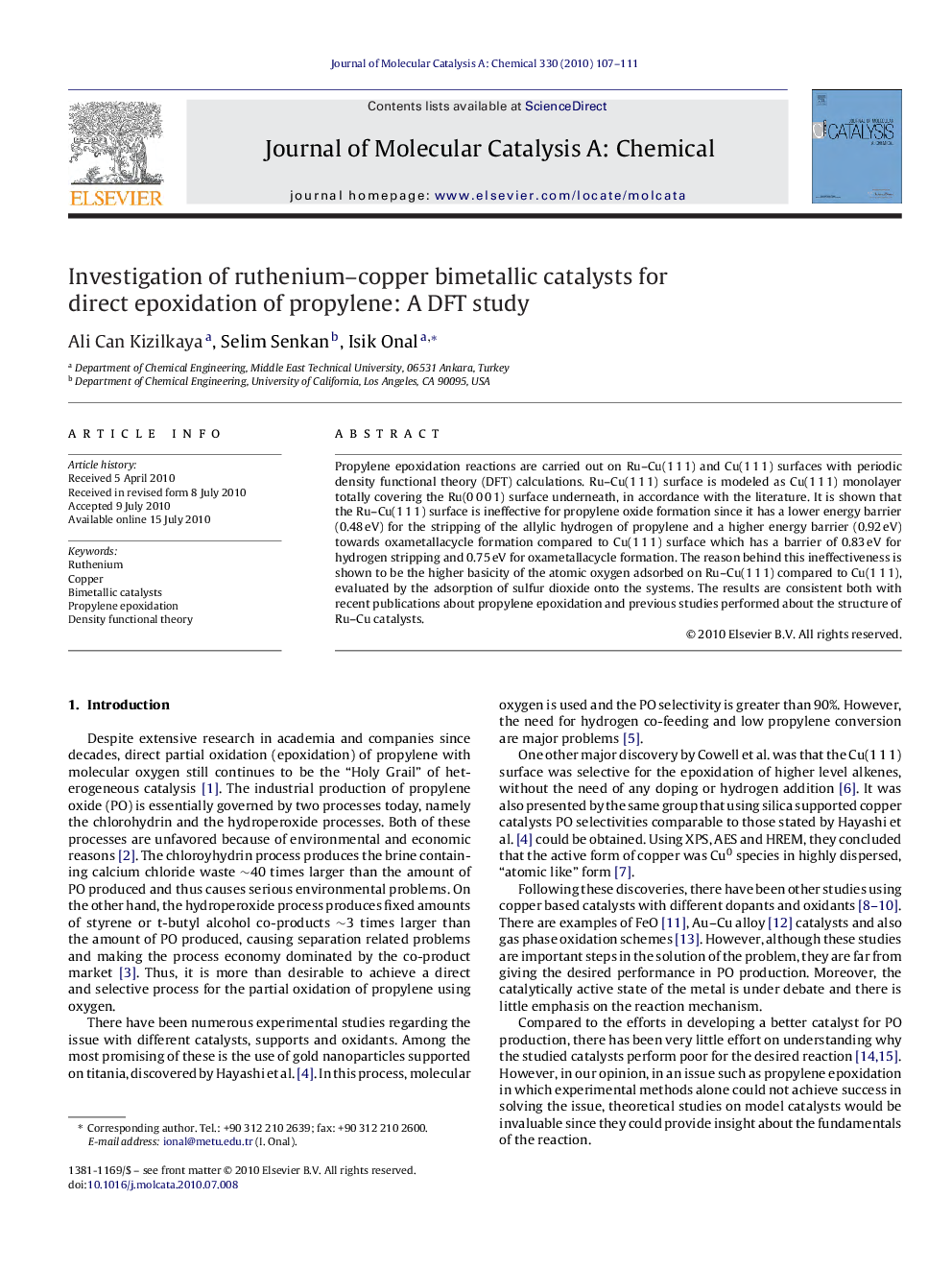| کد مقاله | کد نشریه | سال انتشار | مقاله انگلیسی | نسخه تمام متن |
|---|---|---|---|---|
| 66553 | 48437 | 2010 | 5 صفحه PDF | دانلود رایگان |

Propylene epoxidation reactions are carried out on Ru–Cu(1 1 1) and Cu(1 1 1) surfaces with periodic density functional theory (DFT) calculations. Ru–Cu(1 1 1) surface is modeled as Cu(1 1 1) monolayer totally covering the Ru(0 0 0 1) surface underneath, in accordance with the literature. It is shown that the Ru–Cu(1 1 1) surface is ineffective for propylene oxide formation since it has a lower energy barrier (0.48 eV) for the stripping of the allylic hydrogen of propylene and a higher energy barrier (0.92 eV) towards oxametallacycle formation compared to Cu(1 1 1) surface which has a barrier of 0.83 eV for hydrogen stripping and 0.75 eV for oxametallacycle formation. The reason behind this ineffectiveness is shown to be the higher basicity of the atomic oxygen adsorbed on Ru–Cu(1 1 1) compared to Cu(1 1 1), evaluated by the adsorption of sulfur dioxide onto the systems. The results are consistent both with recent publications about propylene epoxidation and previous studies performed about the structure of Ru–Cu catalysts.
Propylene epoxidation reactions are carried out on Ru–Cu(1 1 1) bimetallic surface with periodic DFT calculations. Ru–Cu(1 1 1) surface is ineffective for epoxidation due to the high basicity of the chemisorbed oxygen atom.Figure optionsDownload high-quality image (61 K)Download as PowerPoint slide
Journal: Journal of Molecular Catalysis A: Chemical - Volume 330, Issues 1–2, 1 September 2010, Pages 107–111